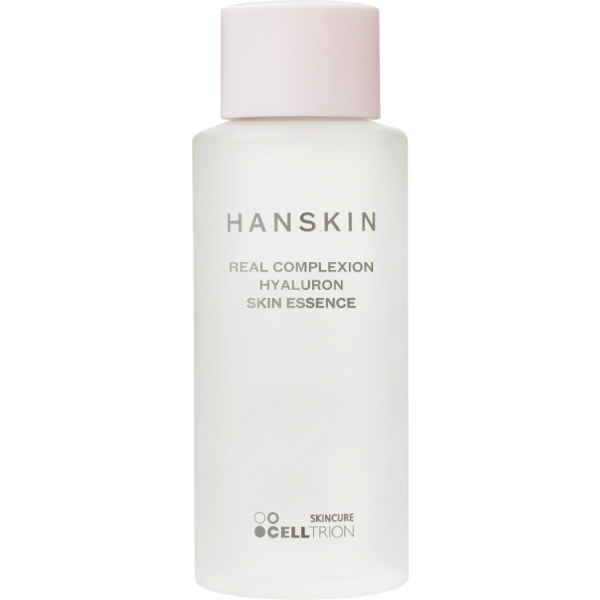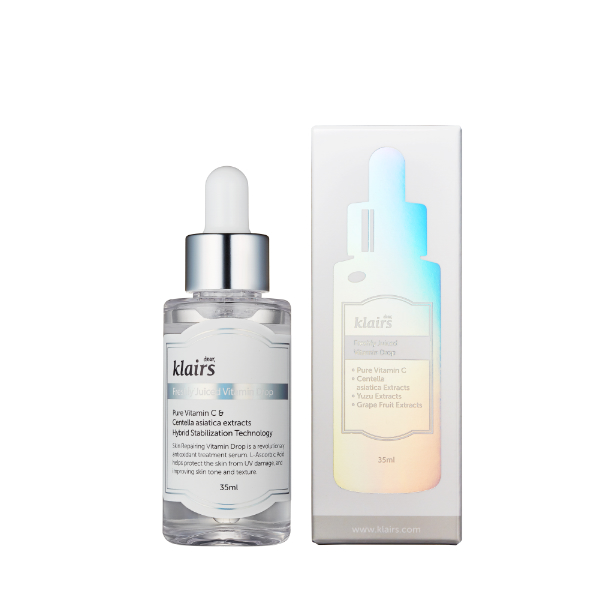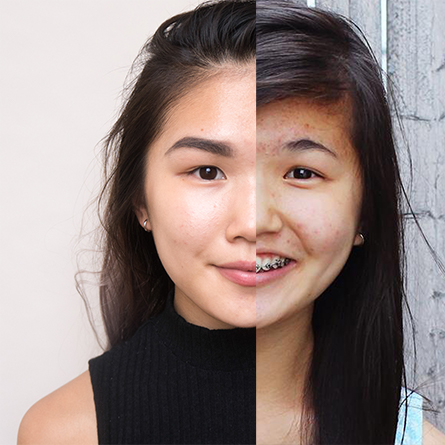Curious about all of the Accutane effects? Want to know what it’s like to start Accutane, go off it, and begin a Korean skin care routine? You’re at the right place.
Accutane, AKA Isotretinoin, is the most effective and powerful acne treatment available for those who suffer from severe nodular acne. Its results are often described as “magical” and it most often leaves even those with the most acne-ravaged skin with a clear complexion. However, it also has extremely serious side effects, and can leave skin in poor condition after the course has finished.
After my six-month treatment on Accutane, I struggled to find a way to restore my skin to health. Read below to find out how Korean skin care transformed my skin, and my outlook on long term skin care in general.
Before I get started, let me give you some visual context. The two pictures below show me before I started Accutane (on the left) and what my skin is like now after adhering to a Korean skin care routine almost two years after I got off Accutane:

About Accutane:
If you aren’t familiar with Accutane, here’s a quick run down to put everything into perspective. Accutane is basically the cure to serious acne. It’s unbelievably effective and is used to fight the most severe and difficult-to-treat form of facial acne: Nodular acne. Nodules are large, inflamed bumps that form deep within the skin, and feel hard to the touch. They are often painful, last much longer than normal surface acne, and are extremely difficult to treat.
Accutane is an ingested medication that delivers a highly concentrated form of vitamin A to the bloodstream to fight acne breakouts. This concentrated dose of vitamin A can actually be risky for the body, making Accutane a dangerous drug if not taken properly. To put it lightly, Accutane, and the monitoring processes surrounding it, is intense.
What happens when you decide to start Accutane:
To begin your treatment, you have to sign up through the iPLEDGE program, which is a distribution channel that regulates and moderates the drug. All patients, prescribers, and distributors must be registered with iPLEDGE in order to access Accutane, and the requirements are comprehensive and strict.
Basically, when I decided with my dermatologist to get onto Accutane, I was given a thick booklet from iPLEDGE outlining all the possible side effects. I had to read through all of them, from birth defects to blurring vision to depression to aches and pains, and was scared, to say the least. However, I signed the booklet, and joined the iPLEDGE program to use the medication.
Being on Accutane:
When I was on Accutane, I was required to have blood tests done every month to monitor various aspects of my health that could be effected by the drug. I was provided a hotline number should I have adverse effects, and met with my dermatologist monthly to discuss any changes in mental, physical, or emotional health.
Luckily, my course was fairly tame. I had a phenomenal dermatologist who meticulously monitored my progress, and provided me with every resource I could possibly need. I struggled with lower back pain, exhaustion, difficulty concentrating, and blurred vision while driving at night. However, the most severe side effect for me was really how much it dried my out.
Accutane and my skin:
At its core, Accutane alters and reduces your skin’s production of oil. This is great for clearing out deep-set nodular acne, but is a drying disaster for the rest of your skin. It got to a point where I was—and this is not an exaggeration—working through four tubes of Chapstick a week. I would slather my body with lotions, Vaseline, and Aquaphor, and still feel dry as a desert. My dermatologist directed me to use a heavy, moisture rich body cream called Vanicream that was a lifesaver, but only if I applied it two to three times a day. As for my face, I was dumping on moisturizer, desperately hoping to cure the dryness. But, at the end of the day, you just kind of have to live with it. No pain no gain, I guess.
After Accutane:
The major issue with the dryness, however, was that it lasted. While my vision returned to normal, my energy and concentration were restored, and my back pain went down once I was off the medication, my skin was left dry. While before Accutane I often felt like I didn’t even need a moisturizer, my skin after the drug was stripped and dry all the time.
In line with this, I still didn’t love my skin. Yes, the acne was gone and that was a miracle, but I was left with skin that was dry, pocked with scars, and pigmented from the deep set nodules that had lived there for so long. My skin was clear, but it wasn’t good—I wasn’t in love with it every morning when I woke up. I tried various American creams and treatments for about a year, but never loved the results. And that’s when I discovered K-beauty.
How the K-beauty routine saved my post-Accutane skin:
I like to think that Accutane cleared my skin and K-beauty saved it. While Accutane removed my nodules, Korean skin care brought me a glowing appearance and a supple, healthy feeling that I had never experienced. I have literally never had good skin, and in the first week after I tried my first 10-step regimen, I knew my skin was being transformed.
For the first time in my life, I was waking up to skin that looked good and felt good. And, as I’ve gotten more and more into K-beauty, my outlook on skin care has completely changed. These are the three K-beauty staples that changed my skin for the better:
Double Cleansing: Double cleansing has revealed to me that there are ways to get your skin extremely clean without stripping it dead, like all my benzoyl peroxide washes used to do. Currently I’m loving the Klairs Gentle Black Deep Cleansing Oil because it’s extra gentle yet I can still feel it deeply cleansing my skin. My skin is cleaner and clearer than it ever was when I was using face washes that were literally called “Clean & Clear.”
Essences: Using hydrating essences has transformed my skin, as it has proven to be the most effective way to retain hydration. Essences like the Hanskin Hyaluron Essence that focus on rehydrating and brightening my complexion are a staple in my routine. They have helped to restore my skin to healthy levels of moisture, and leave my skin with a soft, dewy glow that I literally didn’t know was possible. Essences were the first part of Korean skin care that I tried, and are something I never, ever go a day without.
Vitamin C: As for my scarring and pigmentation, nothing has done as much as vitamin C. After using the Klairs Freshly Juiced Vitamin Drop, I noticed immediate results in the tone of my skin and the severity of my scars. I battled redness in my cheeks that was the result of my post-acne hyperpigmentation, and vitamin C has helped to reduce that coloration drastically. Now that I’ve eased my skin into it, I use it every single day.
My new approach:
It used to be that the end goal was skin that didn’t have acne. I was ravaging my skin with acid face washes, over-exfoliation, and constant attacks on my blemishes, misguided by Western skin care marketing and philosophies. Anything that promised less acne, I threw on my skin. Like many young Americans, I didn’t view my skin as a special, sacred part of my body that needed to be nurtured and cared for.
As I’ve delved into K-beauty, this has completely changed. Now, I carefully think about what my skin needs to be healthy, and act with health and prevention in mind. Of course, I still use products that are targeted for acne-prone skin, but I do it with caution and care.
I’ve never had good skin, but now with my full Korean routine, my skin is at its absolute best. My post treatment breakouts occur much less frequently, and for the first time in my life, I regularly get compliments on the appearance of my skin. It’s one of the parts of my body I am proudest of, rather than my greatest source of insecurity. I’m using products that are more effective than any non-prescription products I have ever tried. And hey, if it can save skin as damaged as my skin, I really don’t doubt the lengths to which Korean skin care can have an impact on anyone’s complexion.







